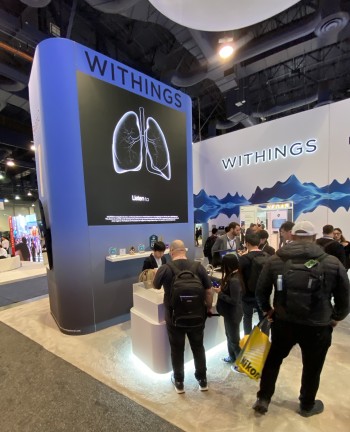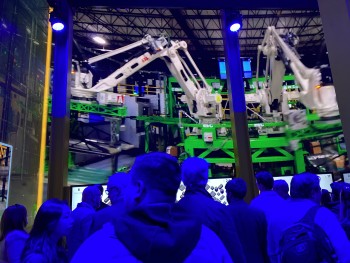I spent my third day at CES primarily in the North Hall of the Las Vegas Convention Center. As opposed to the West Hall. Or the Center Hall. Or the A-G halls of the Sands Expo. CES runs up and down the Las Vegas Strip. Even Mandalay Bay, all the way at the southern end of the Strip, is the venue for pre-conference events. So, the trick is to schedule carefully – if you pick a conference session at the Venetian (which is adjacent to the Sands Expo), then plan to spend that half-day at the Venetian/Sands. Going back and forth between venues more than once a day is ill-advised, unless the second leg is at the end of the day. The inter-site shuttles are great, but surface traffic can be a bear and an hour will be spent before you know it.
Yet the buses have value. This evening, I sat in front of, and then walked back to the hotel with, a retired electronics teacher who comes to CES in search of ideas and new tech. He has a vision – to wire homes to enable aging in place. And given the interoperability of various platforms, his plan to create entirely voice-activated environments, complete with health and care monitoring sensors, is not at all far-fetched. The platforms exist. We just need to nail them together.
Iteratively, or incrementally, that is happening. This morning I spent some time with Elehear, which pairs over the counter (OTC) hearing aids with a hearing test app that works on any cell phone or computer. Notably, the company does not intend to skip over prescription hearing aids; in fact, the app will direct users to an audiologist if defined hearing loss thresholds are measured.
OTC hearing aids are a fast-growing market. The Elehear platform is simple to use, and I took the test. It disclosed in just a few minutes that if, well, if I ever tell anyone that I didn’t hear them when they asked me to take out the trash, I’m lying (the app said I can hear). The vendor did not set out to create a product for rural spaces, but their product meets a distinct need for potential users whose mild hearing loss can be resolved with OTC hearing aids, and who do not have local audiologists for testing. (As an aside, although many OTC hearing aids are FDA approved, insurance coverage varies by carrier; some OTC vendors expect coverage benefits to increase as the products find greater use in the market.)
But other offerings seemed to have more potential than their vendors built in. One was promoting an insole with GPS tracking. The target market is adults with dementia. But as far back as four or five years ago, CES shared a smart cane that offered fall detection as well as sensors that measured gait and balance so that caregivers and physicians could evaluate the user’s mobility over time. Imagine if the insoles included those capabilities.
In positive increments, and in iterative builds, tech is meeting societal needs as developers identify ways to apply new developments in ways that (as we said earlier this week) do not simply solve problems but transform lives.
Next up: Wrap-Up and Impressions and a CES Photo Journal.



